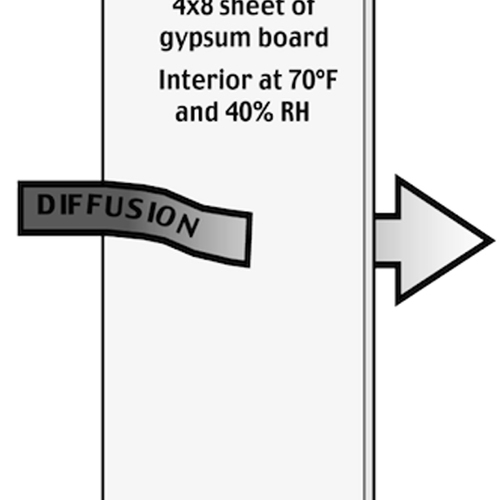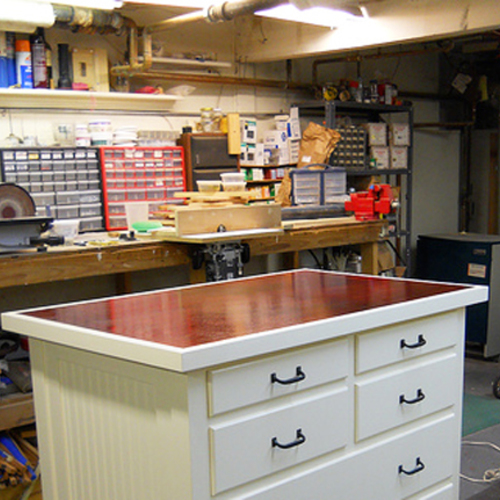
A dry well is a type of hole in the ground designed to accept rainwater. If the dry well is designed properly, it can hold a volume of water for a while, and allow the water to slowly soak into the surrounding soil.
A dry well can be a simple system with a small capacity, or it can be an engineered system designed to handle large inflows of stormwater. Most residential systems are fairly simple, and don’t cost much to install. In this article, we’ll look at all the options.
What types of water can be sent to a dry well?
It’s fairly common for a dry well to receive rainwater collected from roof gutters. If that’s the type of system you are thinking of installing, the bottom of the gutter downspout is connected to a solid (unperforated) 4-inch PVC drainpipe. Alternatively, the downspout can lead to a small plastic catch basin, and the water from the catch basin can lead to the dry well.
A dry well can also accept the discharge from a basement sump pump.
If you have a way to collect storm water that flows off of an impermeable surface on your property — for example, a driveway — you may want to direct that water to a dry well.
In some communities, it may even be legal (and desirable) to send water from your washing machine to a dry well. My advice: don’t hook up washing machine water to a dry well without first contacting your local code authority to see if this approach is legal in your jurisdiction.
It needs to be located away from the foundation
Needless to say, you don’t want to locate your dry well near your foundation (since a dry well discharges water, and everyone wants a…
Weekly Newsletter
Get building science and energy efficiency advice, plus special offers, in your inbox.

This article is only available to GBA Prime Members
Sign up for a free trial and get instant access to this article as well as GBA’s complete library of premium articles and construction details.
Start Free TrialAlready a member? Log in















18 Comments
How many dry wells would it take to capture a 2" rain in a 2000 sf house. I can't imagine a 50 gal. dry well taking too long to fill up, and even the 230 gal. as well.
If my 2 minute math is correct, and 1 ft³=7.5 gals, then 6 ft² @ 2" rain contains 7.5 gal... therefore 2000 roof at 2" rain will run-off 333 gal.. So anything over 1/2" rain will overflow the 50 gal. dry well and 1.4" of rain will overflow the 230 gal. dry well. Am I correct?
Armando,
We make make dry-wells from holes lined with fabric and filled with drain-rock. We use two to three yards of rock. As soon as the downspouts start to discharge water into the pit, it also begins to dissipate it, so the pit doesn't need to have the capacity to hold the entire amount of rain that will fall on the roof. Where things get complicated is if the surrounding soil gets saturated and can't dissipate water at the same rate. In climates such as ours in the PNW, swales and catchment ponds can often be a more reliable solution.
Thanks Malcolm - We've done catchment ponds and swales, but I haven't come across a plastic or small concrete dry well. I guess in the Southwest US would work well, specially with their sandy soils. Just in Sept - Oct in DFW, we've received over 20" of rain spread once or twice a week, and that made me think of the effectiveness of those dry wells. I guess for our houses we would need at least 1000-1500 gal. dry wells minimum.
Armando,
One of the things I've learnt from your posts and blogs over the years is that building in your climate requires a completely different knowledge and set of assumptions than ours up here. Your guess as to what size you'd need is as good as mine.
Ya mean ya ain't got Mesquite, Yuccas, Cactus and heap of sand up yonder in the PNW?
Can a septic system (abandoned) be used as a dry well?
Antonio,
Yes, there is no reason a septic system that was abandoned and is still in good working order can't be used as a dry-well. However that's a pretty rare thing to have. Most were abandoned because they we're failing, or have subsequently not been maintained.
I will be connecting to sewer during a remodel and rolling all the cost together. I live on a sloped lot and the county may require me to do some water manage if I alter my property grade--which I plan to do. I thought the abandoned septic system might be a perfect dry well. That being said, the septic system is over 60 years old, and I don't know how it would handle occasional (cleaner) liquid (but in greater short term inlet rates and volumes) compared to it's current contents.
It should work fine. Our district makes us either remove or fill unused septic tanks with sand. So you might have to bypass the tank and go straight to the distribution box. Having the tank isn't much of benefit anyway because the intake and outlet are close to the same height, so it always says full and you don't get to use that storage during storms.
“[Deleted]”
I would be careful with the term "landscape fabric". Much of what is sold under this name (especially at big box stores) is of extremely poor quality. Spending a little more on good quality filter fabric for a dry well would be my recommendation.
Andy,
That's a good point. Some of it is just plastic with a few perforations.
RainHarvest systems are great. This is perfect for under a driveway away from the house. Using mostly recycled plastic as well. Years ago we used to just stack old plastic milk bottle crates.
https://www.rainharvest.com/graf-ecobloc-inspect-modular-water-storage-system.asp
Looking for some advice, please. We're planning on installing a dry well to manage the water from interior drain tile, exterior drain tile, and a walkout basement stairwell drain for a small 25' x 25' square house. I would prefer a 100% gravity-fed system that doesn't need a sump pump or pit. We will install the pipe with a 1-degree pitch from the house - but are there other piping considerations when using a gravity-fed approach to managing the water eg features of the system design to consider like cleanouts, vents, traps, stand pipe, etc? Is there a best practice to guard against water backing up from the dry well into the basement?
Jim,
If you have a walkout basement, your house is on a hill. Ideally, your footing drains will drain to daylight, not a drywell. That's always the best approach.
If for some reason you can't drain to daylight, a drywell may be your only solution. Whether or not it works will depend on soil characteristics -- so consult a soils engineer to make sure that your soil will allow percolation -- especially if the drywell is well below grade. The deeper the drywell, the worse the percolation (in general).
Cleanouts are always a good idea. See attached photos to get an idea of what a cleanout looks like -- basically it's a vertical riser that extends above grade, with a removable cap or plug at the top.
Interesting. Similar situation where we will have a walkout basement. What are your thoughts on draining to an underground storage tank that will be pumped back out for irrigation and livestock? I imagine being in the northeast I would also keep in mind that it would need to be below the frostline.
Mixed Beans,
That sounds like a fussy system, subject to possible failure if the homeowner doesn't remember to pump out the tank (or if the next buyer of the home is unaware of the need to do so). If you decided to go that route, include some type of overflow pipe that drains to daylight when the tank is full.
thank you, Martin. we’ll add clean outs. Someone helping us suggested that the drains should feed a sump pit and then via gravity. The idea is to have a pit as an auxiliary if a pump is needed in the future. Seems like we’d be better off moving the water directly to the drywell instead. Any views on this?
Log in or become a member to post a comment.
Sign up Log in